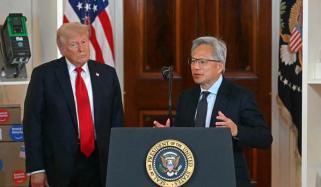_updates.jpg)
The Royal Swedish Academy of Sciences has announced the winner for the 2025 Nobel Prize in Chemistry.
On Wednesday, October 8, a trio of scientists, including Susumu Kitagawa, Richard Robson and Omar M Yaghi, were awarded for their work in the development of metal-organic frameworks (MOF).
The three scientists belonged to the universities of Kyoto in Japan, Melbourne in Australia and Berkeley in the US, respectively.
According to the organisation, the scientists have created "molecular constructions with large spaces through which gases and other chemicals can flow."
Their work can be used to harvest water from desert air, store toxic gases, capture carbon dioxide, or break down traces of pharmaceuticals in the environment.
Olof Ramström, a member of the Nobel Committee for Chemistry, compared the new form of molecular architecture to Hermione Granger's bag from Harry Potter, meaning it's small from the outside but large from the inside and can contain anything.
The chemists worked separately but added to each other’s breakthroughs and devised ways to make stable metal-organic frameworks, which may be compared to the timber framework of a house.
Besides that, the Nobel Prize 2025 kicked off on Monday, as the prize for medicine went to Mary E. Brunkow, Fred Ramsdell and Dr Shimon Sakaguchi for their discoveries concerning peripheral immune tolerance.
Tuesday's physics prize was secured by John Clarke, Michel H. Devoret and John M. Martinis for their research on the weird world of subatomic quantum tunnelling that advances the power of everyday digital communications and computing.
The Nobel Prize 2025 announcements will be concluded on October 13.
Notably, the official award ceremony will be held December 10, the anniversary of the death of Alfred Nobel, who founded the prizes.
















